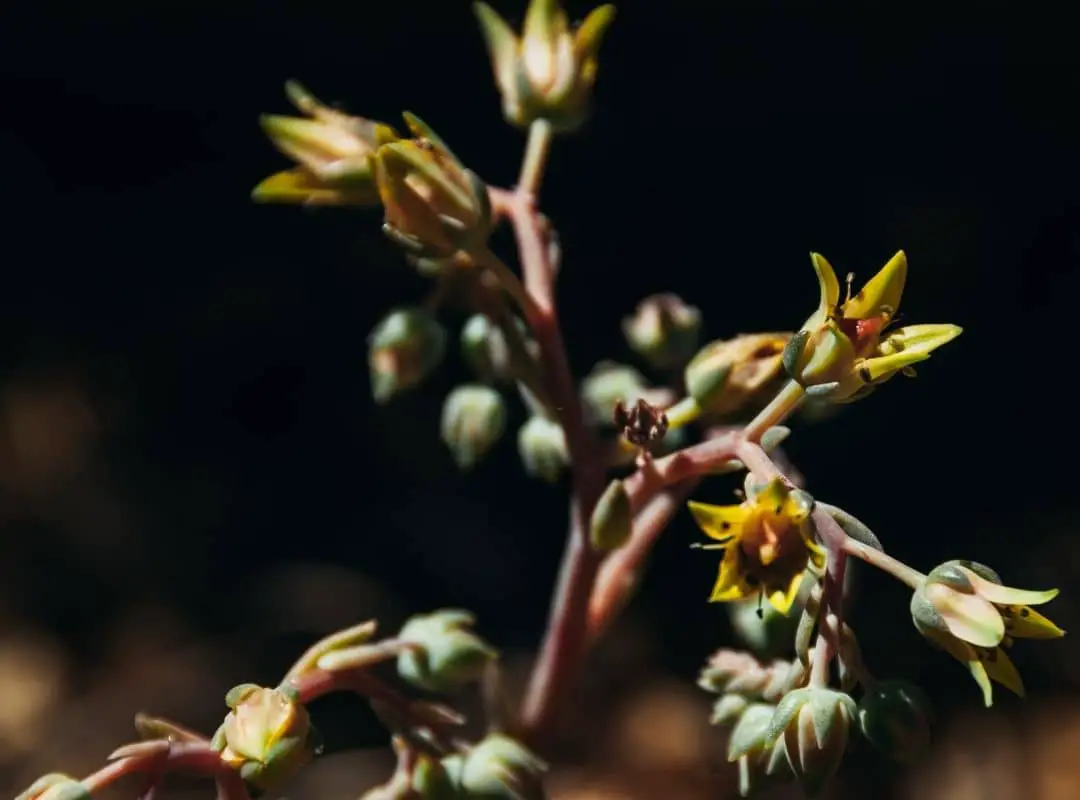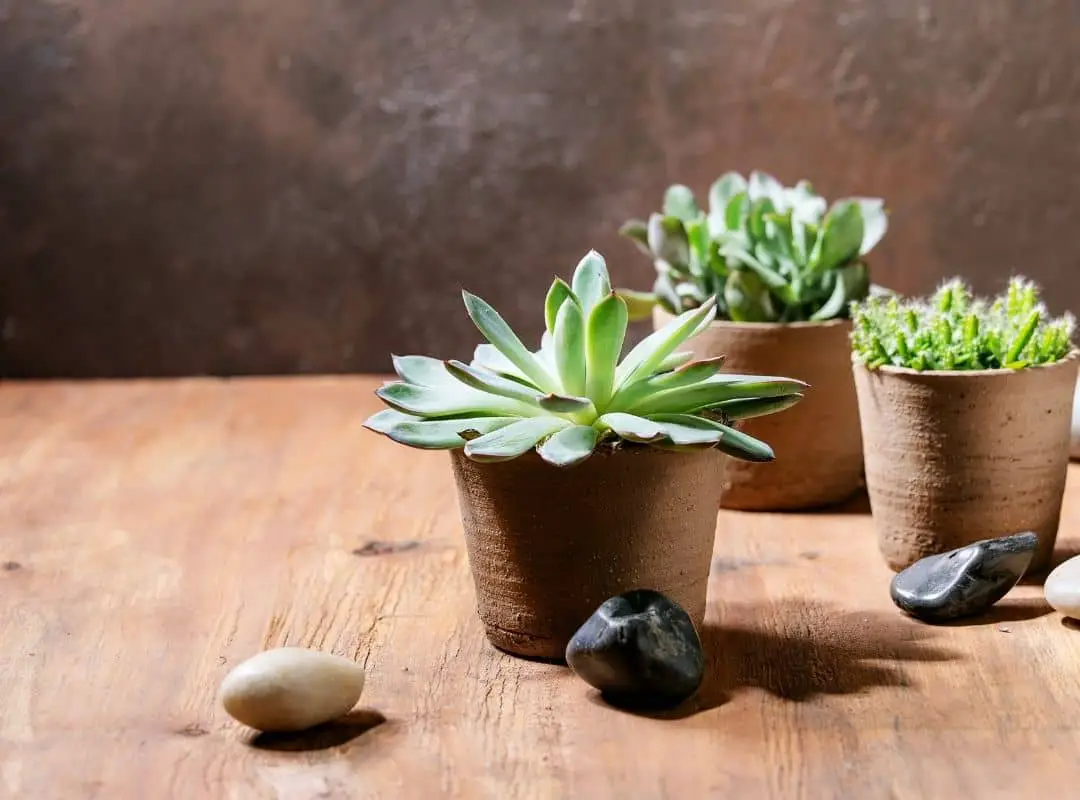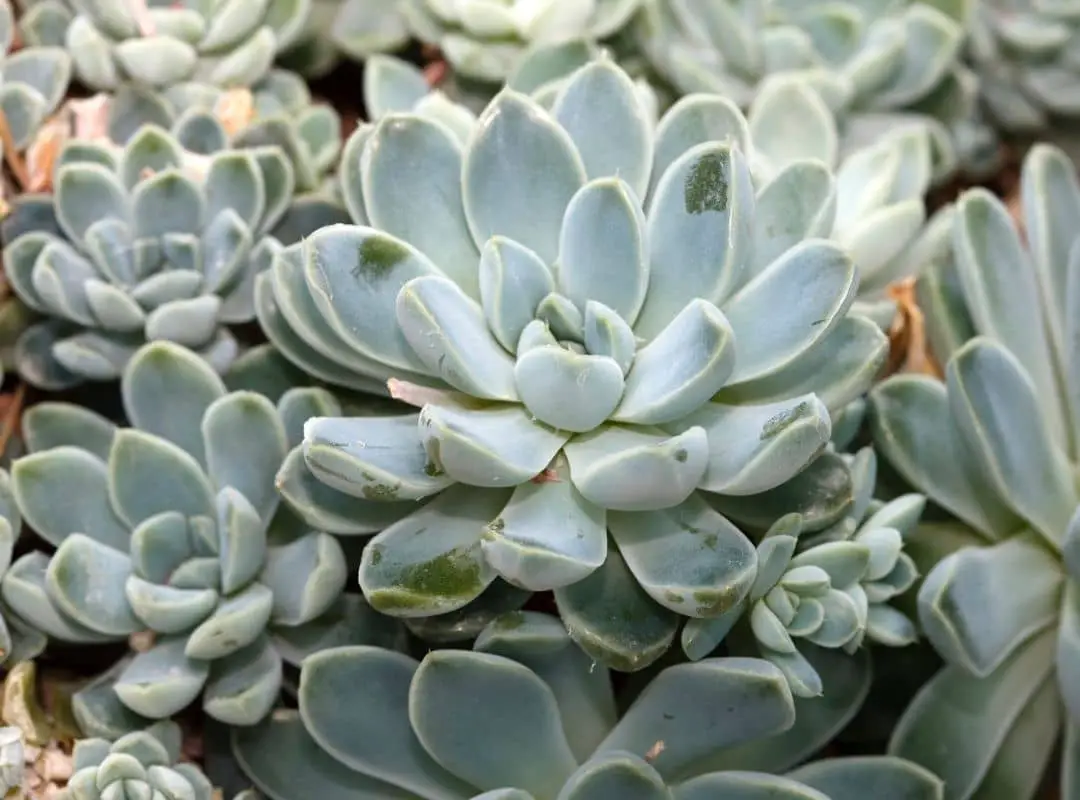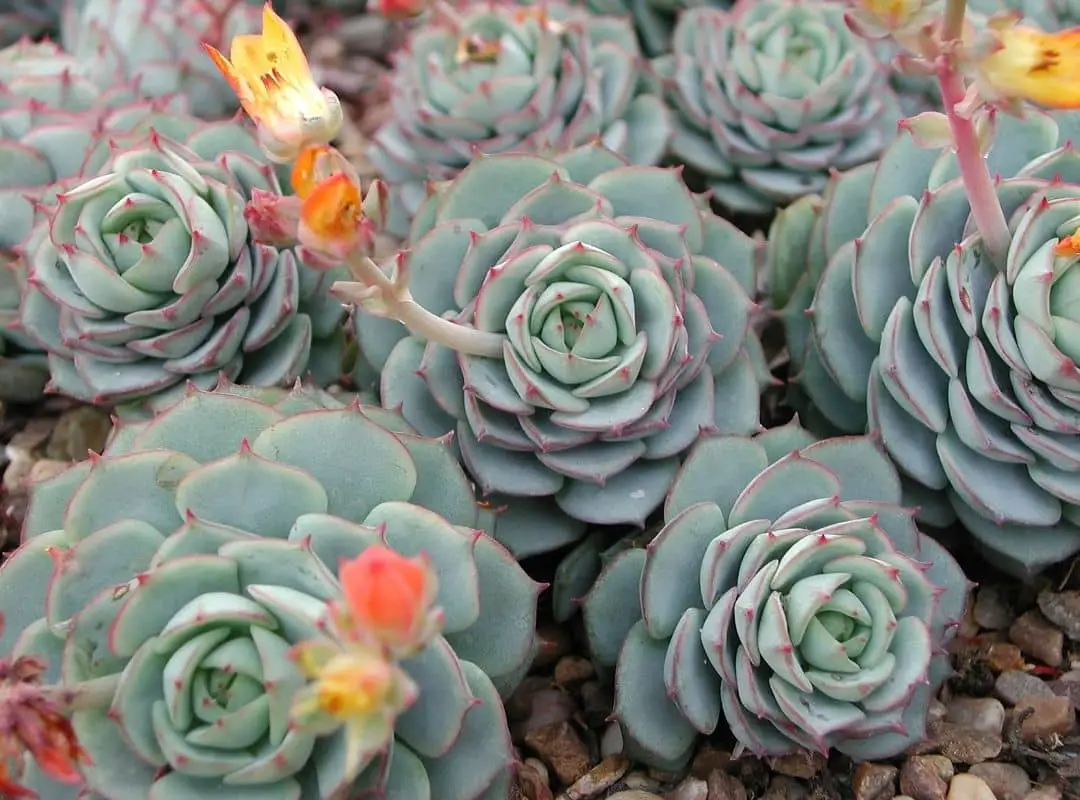Growing Echeveria from seed is not a hard thing to do. If you have correct guidance, it is easier than you know.
Echeveria is a very attractive succulent. Thick waxy spoon like leaves encircle the Echeveria succulent stem, which is largely concealed by the leaves. The leaves come in a variety of colors, including purple, violet, lavender, red, bluish green, and gray, depending on the echeveria species.

Can I grow echeveria from seed?
Plants are commonly propagated from leaves or offsets, but seed may also be used.
On the other hand, the fact that this plant is made from seeds offers two advantages. Such as You will get plants that are rare and difficult to find where you live, and it is very cost effective.
What do echeveria seed look like?
Echeveria seeds are extremely small and look similar to dust or dirt. The color of the echeveria seeds is black.
How to grow echeveria from seed.
The quality of the seed and the freshness of the seeds are the most critical consideration when growing from seed. These factors determine whether germination occurs or not.
Selecting Seed
Old seeds rarely germinate, and they almost always fail to grow. So, you must select best quality/fresh seeds for planting.
Seed and sand mix
After selecting the seeds of good quality and freshness, the seeds should be mixed with approximately twice the amount of fine sand. Then, gently mix the seeds and the fine sand well. Finally, you can receive multi-colored and fine mixture.
Garden soil, sand (2-4 mm), and perlite or pebbles (3-5 mm) can all be present in the potting mix that you will use to grow Echeveria.
Kill the germs
Both the potting mix and the planting container must be sterilized. Place the potting mix in a microwave oven for at least 3 minutes or in an oven for at least 45 minutes to sterilize it.
on the other hand, the container may be sterilized by brushing it with alcohol or soaking it in hot water.
Pot preparation
Planting containers should be at least 1.5 inches wide (4 cm). To enhance drainage, add pebbles to containers.
Fill containers halfway with potting mix, but not all the way to the end. Allow at least 0.4 inch (1 cm) of blank space at the top of the container for the seedlings that have germinated to grow.

Plant the Echeveria seed
The mixture of sand and seeds should be taken using thumb and forefinger and carefully sprayed into the container. You can put a lot of seeds in one container if you leave any space between them.
Watering
In addition to watering, Gardeners put their pots of Echeveria seeds in a tray filled with water to facilitate germination during the germination period. Every pot’s soil can absorb water from the bottom due to the setup.
Light
You should place the tray with a bright and indirect light location. The temperature around 65 degrees Fahrenheit (18 degrees Celsius) is the most suitable temperature for germination. If temperature comes above 70 degrees Fahrenheit (21 degrees Celsius) germination is not done.
Humidity
You should cover the pots to keep the air humid. On the other hand, you should water the trays to keep the potting mix moist. But It is a good idea to open the container every day and let it air for a few minutes.
Small leaves can emerge three weeks after the seeds have been planted. When this occurs, remove the covering to allow the tiny seedlings to breathe fresh air. Fungal infections can be caused during the first two months. Because of that, you should be being attentive. If you can identify any fungus infections, fungicides can be used to treat the plants.
Growing succulents with care
When the Echeveria seedlings have outgrown their pots, they must be transplanted to larger containers. The ideal size of the pot is slightly larger than the root ball of the plant. If the pot is larger than the ideal size, soil mix holds too much water. Then, root rot can happen.
Although seedlings require a somewhat water amount, adult Echeveria plants need less water. They are just sprayed until the potting mix on their plants is dry to the touch.
Echeveria plants need less amount of fertilizer. You can add liquid fertilizer at the start of the spring. It is enough for the growth of the Echeveria plants. Echeveria plants grow well with cactus fertilizer or general-purpose fertilizer. But the nitrogen content of the fertilizer should be low.
Echeveria plants do not like cold temperatures. Therefore, you should keep the Echeveria plants indoors during the winter. The Echeveria plants can be lived outdoors during the summer.

How long does it take for Echeveria seed to germinate?
The germination process typically begins in four days and most seeds germinate within a few weeks.
Echeveria seed germination temperature
Maintaining the correct temperature is very important for germination. Growers place pots with echeveria seeds in a plate filled with water to stimulate the germination. The soil absorbs the water on the plate.
The location where you place the pot should be with bright sunlight but it should not be direct. The best Temperature is around 65 degrees Fahrenheit (18 degrees Celsius) for germination. Germination will not occur if temperature comes above 70 degrees Fahrenheit (21 degrees of Celsius).
How long does Echeveria take to grow?
Plants are commonly propagated from leaves or offsets, but seed may also be used.
A new plant emerges with its own leaves where the roots are emerging after about four weeks or more. It could take anywhere from a few weeks to a few months for this to happen. The leaf you used to propagate will begin to wither on its own after a while.
When we cultivate echeveria from seed, the germination process takes 4 days on average, with most seeds germinating in a couple of weeks.
Should you soak Echeveria seeds?
If we talk about succulent and cactus, generally, Seeds can be soaked for 30 minutes using warm water just before planting the seeds. This process activates the germination by loosening up the seed coat. After this process, the mixture of sand and seeds should be taken using thumb and forefinger and carefully sprayed into the container.
But, Since the echeveria seeds are so small, it’s a smart idea to dampen the soil before sowing them to help keep them from washing away.
How to collect echeveria seeds
If you plant your own echeveria seeds, you will create a variety of beautiful hybrids. Seeds of certain Echeveria species varieties are very difficult to come by on the internet.
As a result, the simplest method is to simply harvest seeds from your own plants. The seeds of the echeveria succulent are extremely small. As a result, you can be mistaken for dirt or dust.
Every year, the echeveria blooms and produces a stunning display of pink flowers. After the flowers have bloomed, echeveria seeds can be obtained.
The flowers cover up after the plant blooms. That’s why their pods have tiny seeds. When the seeds are dry, they can be harvested and cultivated. Finally, the seeds will germinate and develop into new plants.
Why echeveria seeds not germinate?
The main reason why echeveria seeds do not germinate is that the seeds are not really fresh. On the other hand, germination issues are often the result of environmental issues. Different environmental conditions can play a part in deciding how effectively seeds germinate.
Water
Seed germination normally necessitates the use of water. Seeds dry out as they mature. These mature seeds need a large amount of water to germinate successfully. Cellular metabolic processes and development will only take place after they have consumed enough water.
When seeds absorb water, hydrolytic enzymes begin the process of transforming stored food resources into chemicals needed for germination processes.
Likewise, Water is also necessary for the seed coating to break down, allowing the seedling to emerge. If your germination rates are low, it is possible that you’re not providing enough water for these processes to take place.
The target would be to get enough water to keep the seeds moist. You don’t want to soak them, however. One of the most common causes of weak, patchy, or non-existent germination is overwatering. Overwatering can result in waterlogging and compaction. An extremely humid climate may also increase the risk of damping off problems.
Air supply
Before the mechanism of photosynthesis takes over, a germinating seed requires oxygen for metabolism. Aerobic respiration provides the majority of a seedling’s nutrition prior to the development of its leaves.
Before such seeds can absorb water and oxygen from the atmosphere, their coatings must be broken down. Both underwatering and overwatering can result in seeds receiving insufficient oxygen for germination.
It is possible that underwatering contributed to the coating’s failure to break down. The soil may have been waterlogged and compacted as a result of excessive watering. It is more difficult for oxygen to get across compacted areas.
Temperature
Temperature is another common cause of seed germination issue. The rate of cellular metabolism and development would be influenced by temperature. Under a certain temperature range, seeds will usually germinate.
The best Temperature for echeveria seeds is around 65 degrees Fahrenheit (18 degrees Celsius) for germination. Germination will not occur if temperature comes above 70 degrees Fahrenheit (21 degrees of Celsius).
Damping off is a problem that affects almost all seedlings. echeveria Seedlings would be unable to emerge due to pre-emergence damping down. Seedlings can collapse sometime after germination due to post-emergence damping down.

Can echeveria seed survive winter?
Echeveria are Mexican and Central American natives. They cannot handle the cold environments. So, they are not used to being outside in the winter.
Furthermore, in freezing conditions, they will die. Through bringing them indoors during the winter, you can keep them safe. Once the chance of frost has passed, eventually bring back them outdoors in the spring.
Credit to : Cerriscapades
Read more : How Often Should I Water My Echeveria Succulent?


